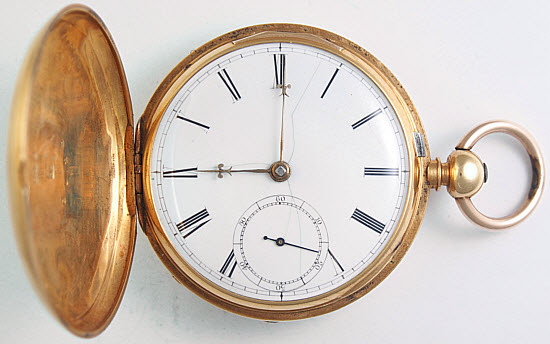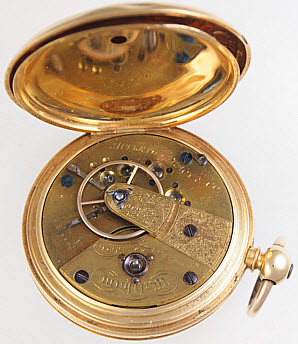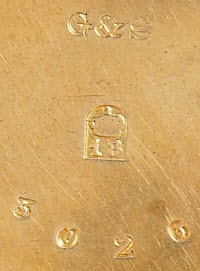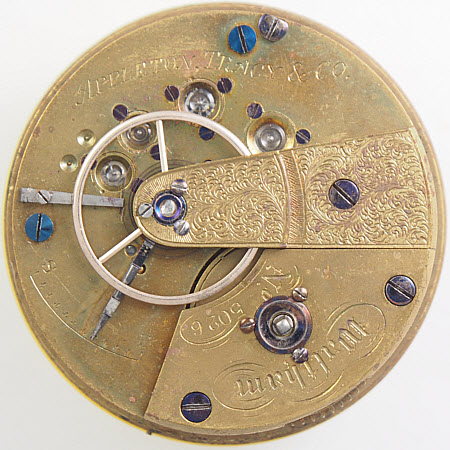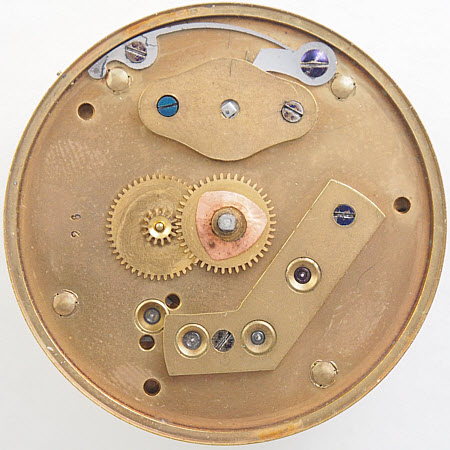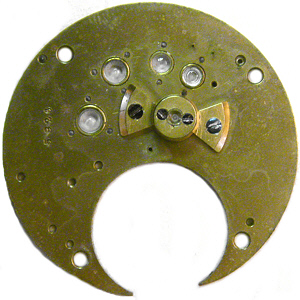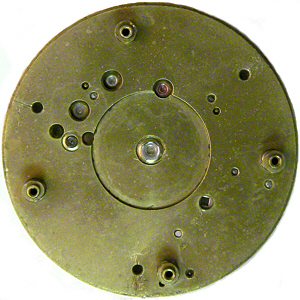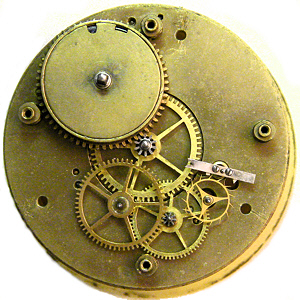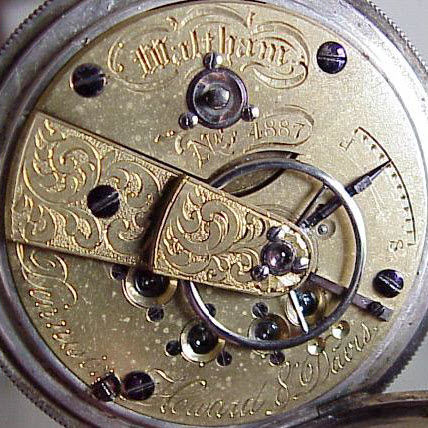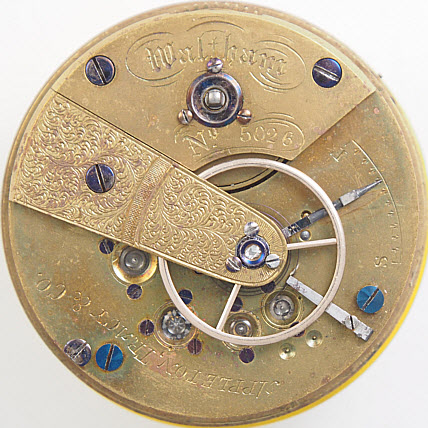Possibly First Known Appleton Tracy Pocket Watch(references [r---] are in my monograph Origins of the Waltham Model 57) This AT&Co Model 57 #5026, is possibly the earliest surviving Appleton Tracy pocket watch. According to the American Watch Company Serial Number Ledger [ref. 1], the movement was made in July 1857, and according to sales records [ref. 55] & [ref. 102] it was sold July 1857 as 16 jewels with gold balance to Pratt & Reath for $24.25 at 20% discount without a case. (click photos for larger views)
Top Plate and Pillar Plate (under dial) Views The top plate measures 42.7 mm and the pillar plate measures 45.8 mm, which are consistent Model 57 sizes. I typically get 45.7 mm for the pillar plate, but I often see small variances with these measurements, especially with the pillar plate, which I suppose could be tollarances of manufacture or my ability (or inability) to acurrately make these measurements to 3 significant digits with an old mechanical micrometer. The 3-screw jewel settings are real, but the 3rd wheel jewel is a little smaller, 3.5 mm, than most in predecessor DH&D and later AT movements (4 mm). The wind guard cup is steel as its predecessors; replaced with brass in later movements. The pillar plate is stamped with the subassembly number 26 which is also under the balance bridge; number 6 is under the hour & minute wheels. The comma click, oblong ratchet bridge (over barrel) and long bridge are all standard DH&D/M57 parts. Note the standard "peep" holes in the pillar plate around the pallet arbor jewel through which to see the escapement in motion as in predecessor movements.
Three Views: Underside of Top Plate, Underside of Pillar Plate, Train The serial number on the underside of the top plate is believed to be the original DH&D plate number. The U-Bridge (Buterfly) potance is the same part on DH&D movements. The center arbor is jeweled giving the movement 16 jewels. The train is standard M57 (and later DH&D) with the 4th wheel pinion above its wheel. Note the 3-spoke pointed tooth (ratchet) escape wheel and English closed pallet as on DH&D movements. Shown below is a high number DH&D movement compared with the AT 5026.
As can be seen the layouts are identical (and measure the same). The style of the engraving on the barrel bridge is the same. The engraving on the balance bridge is different although similar. The main difference is the placement and font of the signatures. This signature also changed as the M57 evolved. The DH&D movement is #4887, the highest numbered complete movement I've recorded to date (March 2016) and I have been tracking these watches for over 20 years. Indeed, I believe Howard and Rice absconded with #4891 through #5200 Boston Watch Company movements (or so and plates) when the company went insolvent and they lost out at the May 9, 1857 auction. Rice (and Howard) was specifically accused in the insolvency papers [ref. 106] of removing "movements numbered 4891 - 4910 inclusive and other movements." The BWCo maintained a serialization of matched parts; see [ref. 103]. The serial number is stamped on top of the barrel bridge. All of BWCo movements appear to have their full 4-digit serial number stamped horizontally on the underside of their top plates (because there is no number on top). The last two significant digits (subassembly number) are stamped on the pillar plate and on the underside of the balance bridge. The minute and hours wheels have the last significant digit. This serialization was continued by Royal Robbins when he bought the company at auction. According to the sales records Robbins' first 20 movements were signed Tracy Baker & Co in name of his investors (5001-5020). After a couple of months Baker had a falling out and Robbins brought in his business partner Appleton, and renamed the company Appleton Tracy & Co. Movements probably starting 5021 were signed Appleton Tracy & Co. As we have seen over many years of watch sales, movement #5012 might be the only surviving TB movement; and #5026 might be the earliest surviving AT movement. Howard & Rice and Robbins did not (or were not able to) maintain the rigid serialization, though. The visible serial numbers of their movements do not match the numbers inside. I believe the explanation is because both parties were quickly trying to do the best they could with the inventory they had on hand; and I believe many plates were already pre-numbered. The insolvency papers [ref. 106] list a lot of inventory including 100 movements 1/2 to 7/8 done, a long list of parts in various stages of completion, and 1170 pairs of plates! This inventory was incorporated in H&R movements and in early TB/AT movements. It would make sense that H&R would take off with low numbered parts and Robbins was left the high numbered parts. So what we see are matched part numbers inside the movements but different from the visible number on the barrel bridge. Howard numbered the underside of his early Howard & Rice top plates with five digits, the first digit being '1'. I belive the four right-most digits are the original BWCo serial number; e.g., as in 14930 inside H&R #6011. It is interesting to note that all of the H&R 4-digit numbers (48xx-52xx) are lower than the AT&Co numbers (58xx-59xx). I don't know why Howard bothered adding the '1'. This serialization is documented in the monograph (see [ref. 103]) and observed existing watches shown in [ref. 103] Table 4 support the above hypothesis. The number on the underside of AT&Co 5026's top plate is 5826. |
